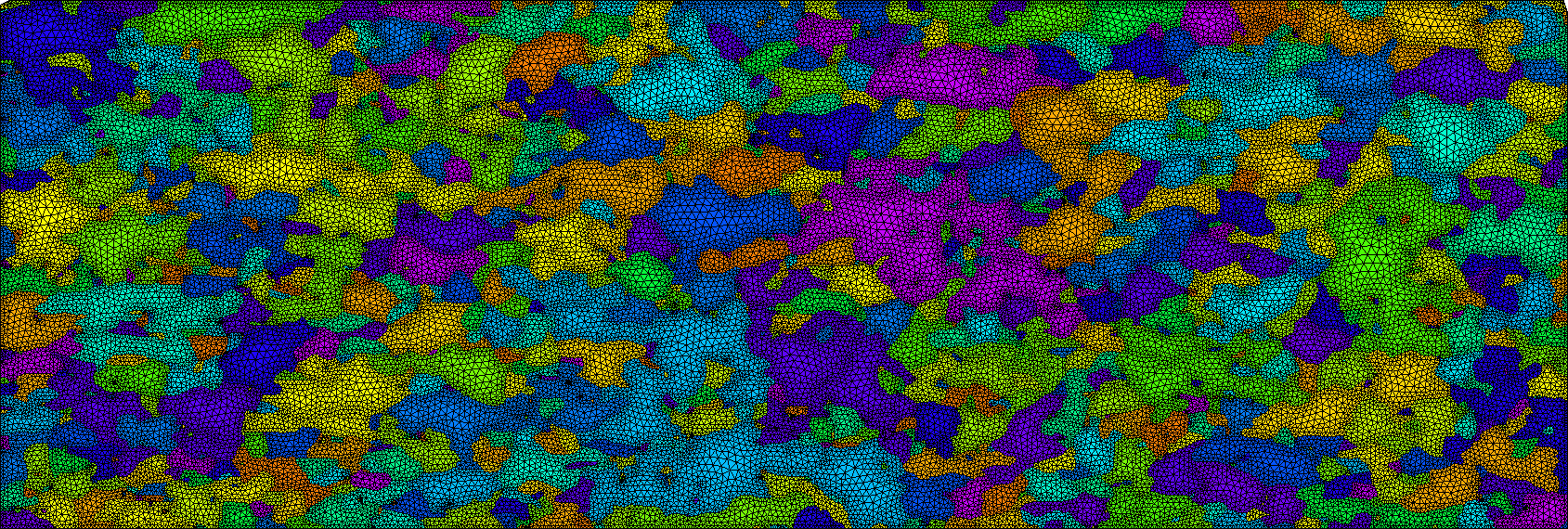This toolbox for Matlab allows to generate meshes from EBSD data. It is intended to perform Finite Element Analysis (FEA) at grain scale on polycrystal imaged by EBSD. It is based on MTEX and Gmsh.
This toolbox defines the class named gmshGeo. Once the grains are computed using MTEX, an instance of gmshGeo can be constructed. This object can be used to generate a Gmsh-readable file, in order to mesh it and perform FEA.
This toolbox has been designed for MATLAB R2013b, but it may work on newer versions. In addition, the following are required:
- The MTEX toolbox (v 5.3.1 or newer) should be installed in your MATLAB session;
- The Gmsh software (v 4.9.5 or newer) should be installed on your computer (at least its binary should accessible).
It works on both Windows and Unix-like plateform (Linux and Mac OS).
🐧 Linux users
When running the ``mesh`` command, you may stumble on the error below:/MATLAB/sys/os/glnxa64/libstdc++.so.6: version `GLIBCXX_3.4.21' not found (required by gmsh)
If so, instead of running
matlab
run
LD_PRELOAD="/usr/lib/x86_64-linux-gnu/libstdc++.so.6" matlab
Here is an example of mesh obtained from the EBSD map called aachen in MTEX:
Visit the corresponding site to see other examples and full documentation. Alternatively, you can check out the docs/Examples folder.
The aforementioned examples can be easily reproduced. In addition, the reader can check out the reproductibility of minimal example on Code Ocean.
If you don't have time to read the documentation, check out the Graphical User Interface (GUI) by running:
MTEX2GmshGUI
It will open a dialog box gathering all the parameters available in MTEX2Gmsh in a more user-friendly way.
If you use this work, please cite the following paper:
Depriester et al., (2020). MTEX2Gmsh: a tool for generating 2D meshes from EBSD data. Journal of Open Source Software, 5(52), 2094, https://doi.org/10.21105/joss.02094
In BibTeX, use the following entry:
@article{MTEX2Gmsh,
doi = {10.21105/joss.02094},
url = {https://doi.org/10.21105/joss.02094},
year = {2020},
publisher = {The Open Journal},
volume = {5},
number = {52},
pages = {2094},
author = {Dorian Depriester and R\'egis Kubler},
title = {{MTEX2Gmsh}: a tool for generating {2D} meshes from {EBSD} data},
journal = {Journal of Open Source Software}
}
Please, use the Issue tab to report any bug or whish for new feature.
You can easily edit the present code so that it fits your needs (as long as this edit complies with the MIT licence). You are also welcome to contribute. In this case, please read CONTRIBUTING.md.










